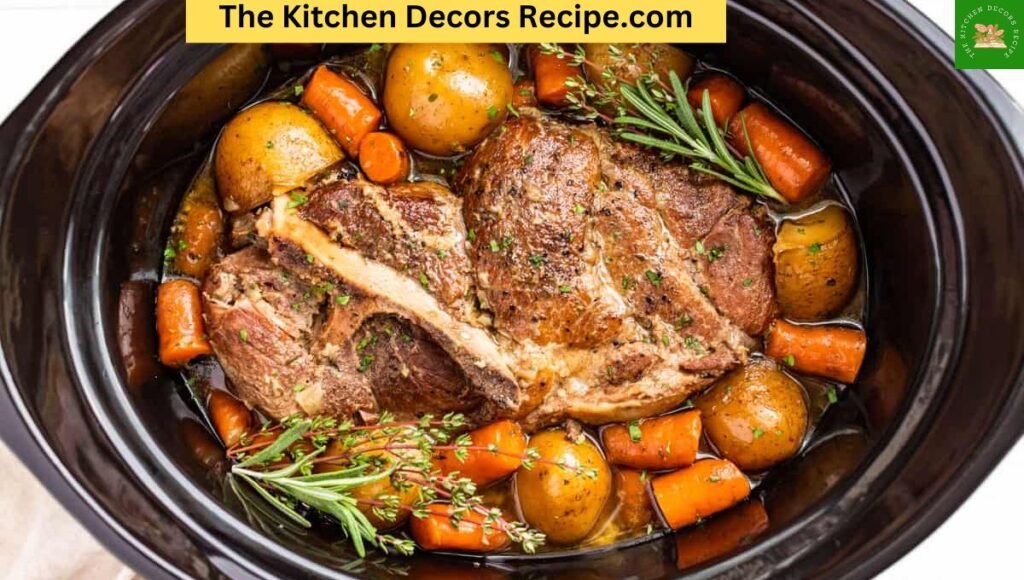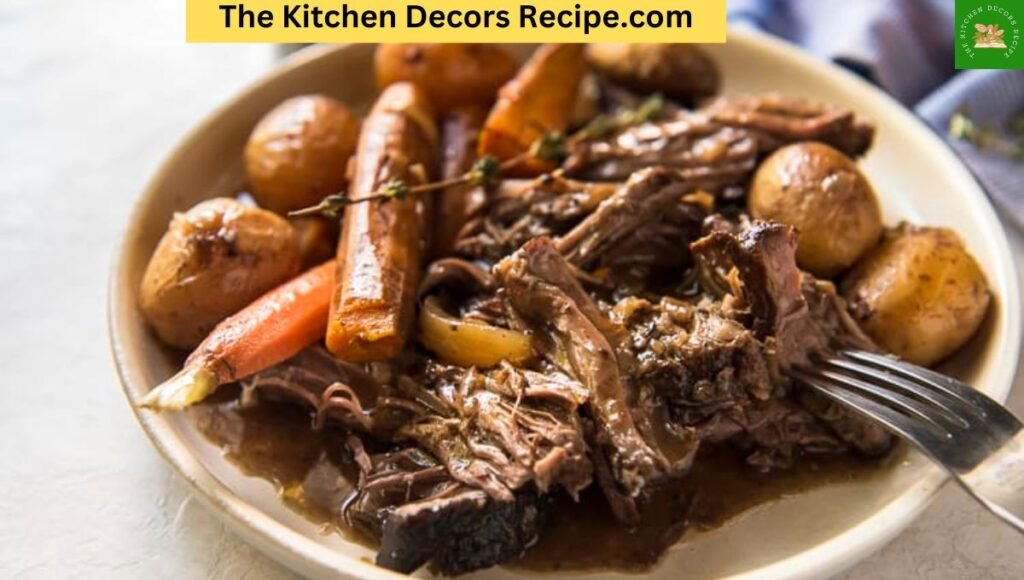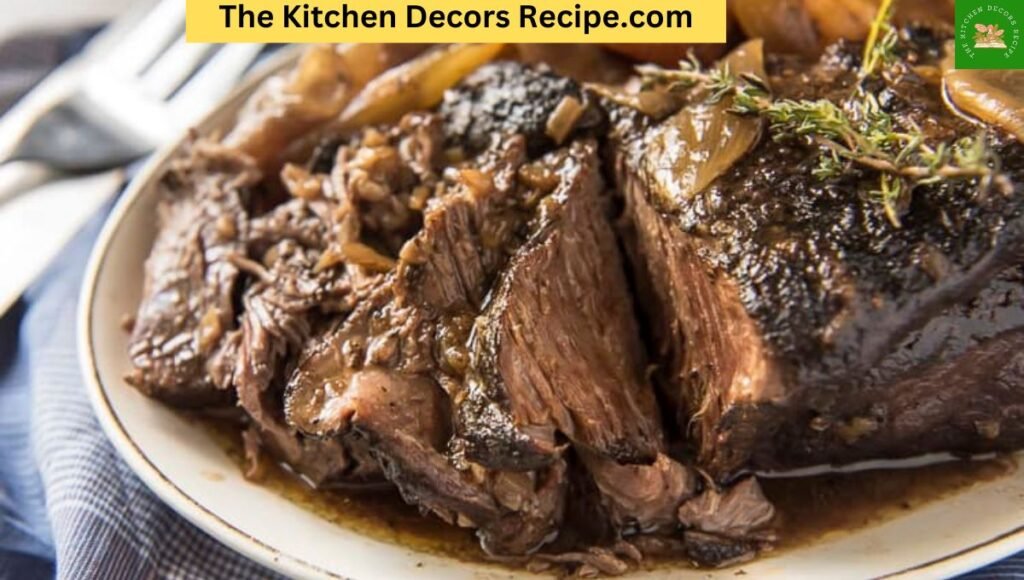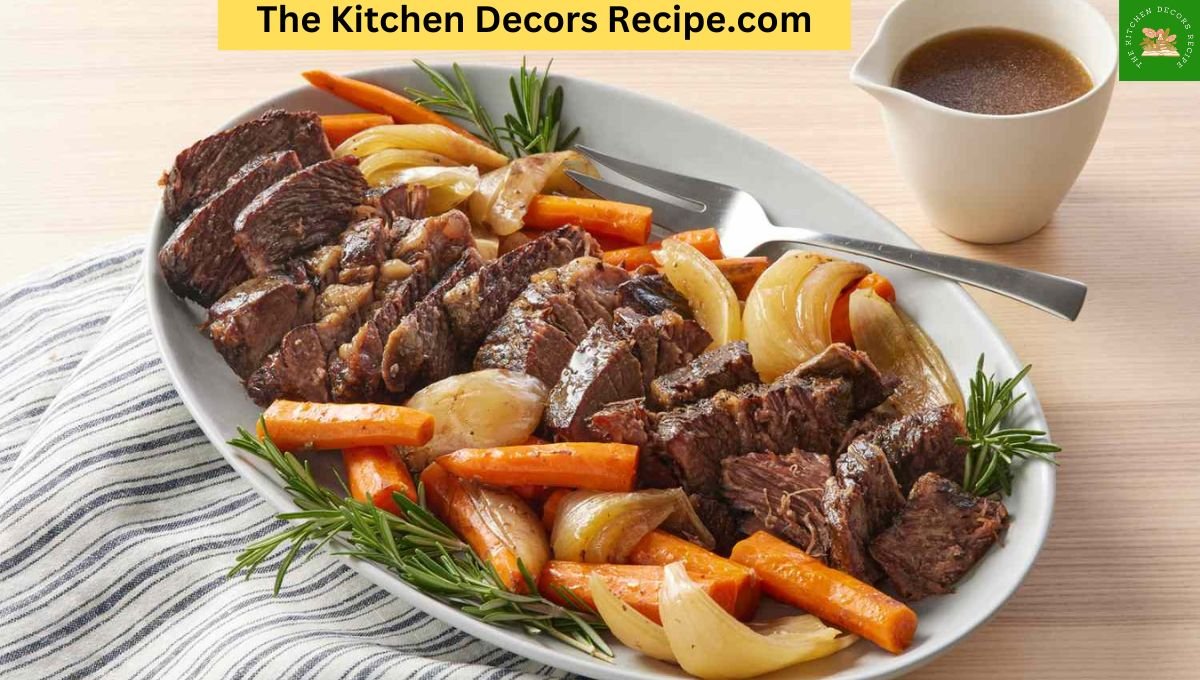How long can you cook a roast in a Crock-Pot without overcooking it : You can get a fall apart chuck roast, or a tough and dry meal. Use the right kind of meat. Do you know the correct temperature? Is there enough liquid in your crock pot? You should know the answer to these questions, as many factors can influence the quality of the dish.
You’ll need these ingredients to make our tender recipes for slow-cooked beef, and you can fix it if the recipe doesn’t work out.

How to avoid Dry or Tough Meat
Select the Right Cuts
The best cuts for slow cookers are those that have a lot of marbling and fat. It can also include meat with the bone. You want to avoid the skinless and boneless chicken breasts.
What we recommend is:
- Beef – Look for cuts such as chuck roasts, stew beefs and brisket.
- Pork : Select shoulder or pork ribs.
- Chicken: For the slow cooker, chicken thighs are the best option.
The tougher cuts of meat are usually less expensive. This makes them ideal for a slow cooker meal that is budget-friendly.
Add Just Enough Liquid
Your slow cooker will need liquid to keep the pot-roast moist. This can be wine, water, or meat or vegetable broth. It doesn’t have to be submerged. A cup or two will suffice, as the lid keeps liquids inside.
Add enough liquid in the slow cooker to cover the meats about 1/3 way. It allows the meat to braise, rather than boil. Meat becomes tough when it is boiled!
Be Patient
Check the dish half way through. Don’t lift the cover. Lifting the lid will allow heat and moisture to escape, which can affect the texture of the meat. Lifting the lid for a short time is the best way to avoid the temptation of checking on your food. To avoid releasing too much heat, keep it to less than a minute.
Cook Low and Slow
Add your other ingredients and liquids, then set your cooker to “low”. Set your slow cooker on “low” and add your liquids. Plan to cook your warming meal for 6-9 hours. Slowly cooking the meat for a long time breaks down connective tissue and fat. The result is deliciously tender and juicy meat.

Can you overcook food in a slow-cooker?
Slow cookers have been designed to cook for long periods. But yes, it is possible to overcook food in a cooker, if you leave something on the wrong setting longer than necessary.
Sonali Ruder is an emergency medicine doctor, chef and founder of The Foodie physician. She also loves slow cookers. She says that when you cook meat, it will be done once it is tender enough to cut with a fork. Overcooked meat will be “tough” and “dry”, while overcooked veggies will be mushy. You may need to experiment to find out what makes food “overdone”. As a doctor, Dr. Ruder is also a proponent of food safety. Another way to determine if food is ready is using an instant-read thermometer. “Cook meat between 145 and 160 degrees Fahrenheit. Cook poultry at 165 degrees Fahrenheit. And cook soups, stews and sauces up to 165 Fahrenheit.”

What can’t be cooked in a crock pot?
Slow cookers work well for some things, but not all. You should be cautious when putting certain ingredients into your slow cooker, especially if you plan to leave them there for an extended period of time.
your dish right away. It will curdle. Alexis Davidson Kornblum is the creator of Lexi’s Clean Kitchen and she tells SELF that if you’re cooking a cream stew then it’s best to add the dairy ingredients in the last fifteen minutes.
Should liquid be used to cover food in a slow-cooker?
University of Minnesota states that liquid should cover meat or poultry in a slow-cooker. According to the University of Minnesota, “the liquid or water level should cover ingredients to ensure efficient heat transfer throughout the slow cooker.” For vegetarian recipes, Vance & Lacalamita recommend using about one cup of liquid, unless the recipe is a soup.
Why does my beef get tougher when I cook it in the slow-cooker?
Kristen Carli M.S. R.D. owner of Camelback Nutrition & Wellness tells SELF that beef can be tough in a slow cooker if there is not enough liquid or if it’s not cooked long enough. The fattier cuts of meat are usually the ones that become juicy and tender. You will see that lean cuts of meat are more likely to dry out.
Is it safe for a slow-cooker to be left on over night?
The short answer is: yes. Slow cookers can cook food for long periods of time. Some slow cookers allow you to leave them on up to 24 hour. Follow the instructions in your manual and set it to warm or low rather than high. Dr. Ruder says that “[Low] keeps it at a temperature you can safely eat (usually between 145 and 165 degrees Fahrenheit), until the time is right.” “The food may become overcooked and dried out if you keep the slow cooker on high for so long.”
You’ll want your cooking skills to improve now that you know the basics.
Avoid these mistakes when slow-cooking your food.
1. You don’t sear your meat first.
There are better methods than putting raw meat into your Slow Cooker. Kornblum told SELF, while you technically could slow-cook raw meat, it wouldn’t produce the best results. If you brown the meat first, it will add a rich caramelized flavor to your dish.
2. The wrong cuts of meat are being chosen.
No cuts of beef are off limits in a slow cooker. However, Michele Sidorenkov recommends marbled, fatty, and tough pieces of meat, because they are “full collagen and connective tissues” which break down over time. Slow-cooked meats are incredibly tender.
3. You cook chicken with its skin on.
No matter how long it is cooked, the skin of chicken will not be delicious if you leave it in a slow cooker for too long. Even if the skin-on meat is seared before it goes into your slow cooker, it will likely end up rubbery and mushy. Kornblum says that if you want to cook the chicken with the skin, then broil it for a couple of minutes once the slow cooker is finished.
4. Salt the food too much at first.
Christopher M. Wilmoth is the corporate chef of Hong Kong’s Lee Kum Kee and tells SELF that adding a lot of salt at the beginning, when the ingredients are raw, will likely result in over-seasoning. He explains that if too much seasoning, stock or sauce is added to the slow-cooker before or during cooking, the dish may taste too salty. What’s your best bet? Start by seasoning with just a tiny amount of salt, then add more salt when you’re done.
5. Fresh herbs are added at the beginning.
Fresh Herbs are best when they’re fresh. Add a sprig or two of thyme to your Crock-Pot before you start cooking. It will likely brown and lose flavor by the end. What’s a better alternative? The dried herbs should be added at the beginning of the dish, so that the ingredients can meld together. Finish with fresh herbs. They’ll give your dish a bright, refreshing, and vibrant punch.
6. Use the correct amount of liquid
What liquid should you put in your slow cooker? Be careful not to add too much liquid when converting a recipe for your slow cooker. You should reduce the amount by half, as the lid will trap moisture and prevent it from cooking off. Make sure the meat is completely covered with liquid. Otherwise, keep it low.
7. You don’t add the correct amount of ingredients.
Vance and Lacalamita recommend that slow cookers be filled “at least half-way, but not more than two thirds full.” If you fill it less than halfway, the food will overcook. On the other hand, if your slow cooker is too filled, your food won’t cook.
8. You don’t layer your food.
You should always remember that the slow cookers, such as the Crock-Pot, have the heat source at the bottom. This means that you should start with the foods that will take the longest time to cook. The U.S. The Food and Drug Administration recommends that you start with vegetables, then meat or poultry. The top of the oven is the best place to cook delicate items.
9. Every now and then, you can remove the lid of the pot to stir.
Do not peek. Wilmoth says that slow cookers trap heat. He tells SELF that “every time you remove the cover, the slow cooker will lose heat.” Kornblum advises that if you must take the lid off before it is done (perhaps you need to add some ingredients at the last minute), you should do so as quickly as you can – 30 seconds maximum. Let your slow cooker work its magic and you’ll be able to eat in just a few short hours.
10. You don’t need to grease the slow cooker.
It’s not necessary to use a nonstick spray if your main cooking is soups and stews. However, many sweet slow-cooker recipes require it in order to avoid a mess. Oil or butter can be used. Sidorenkov told SELF that if you‘re making a [dessert] recipe in a slow-cooker, such as a cake or brownies, it is important to grease the cooker before. If your slow cooker has the capability to sear your ingredients before slow cooking and is more like a Multi-cooker, then I recommend adding oil to the surface of the slow cooker to prevent your ingredients from sticking when browning.
